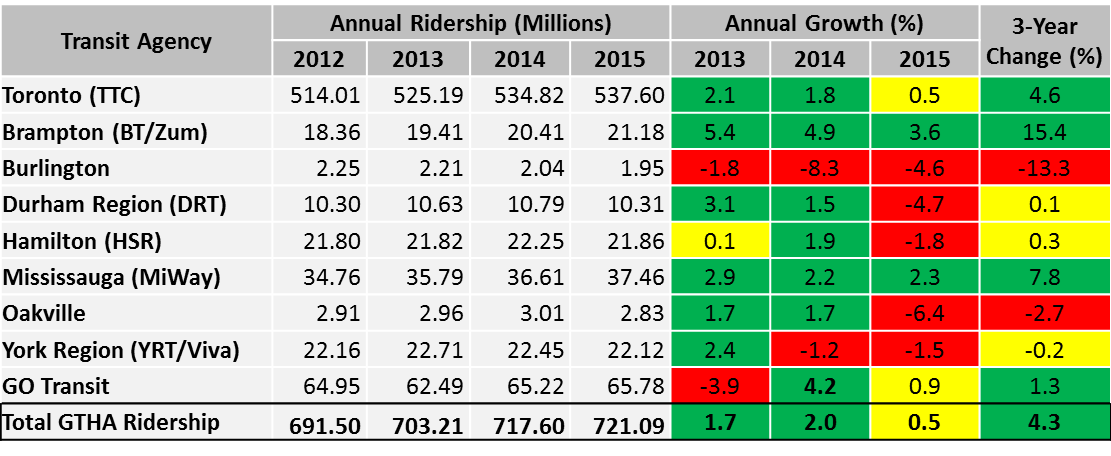TheTigerMaster
Superstar
I don't see the point of buying new DMUs when the line is going to be electrified in the next few years.
As for the 3% rise in GO ridership over the last year, that is nothing to be proud of and should be ringing alarm bells at Metrolinx. The GTA grew by 2% last year alone and when you consider the huge increase in off-peak/weekend service, they results are pretty bad. This backs up what I have been saying for years.............all the service and frequency improvements mean little if people can't afford to ride them in the first place.
Wynne's announcement of a TTC/GO subsidy of $1.50 per trip will help and now we will start to see real ridership increases but it's just a start. It will prove that there is massive latent demand for GO/RER services but it's the prices that are holding riders back. Funny how a small $18 million per year to increase ridership will do as much as billions in infrastructure that people can't afford to take.
I wish fixing GO's affordability problems were as easy as lowering fares. Unfortunately the affordability problem originates out of the GTA's sprawling build form and GO Transit's car dependancy, both which cannot be easily corrected.
More than 80% of GO Transit commuters arrive at GO Transit stations by car. 62% of GO Transit Commuters park their single-occupancy vehicles at GO stations over the day, while they take the train into Toronto. These commuters are not only paying GO Transit's exorbitant fares, they're also paying for the various car-related costs, such as gas, insurance, maintenance and parking. On top of that, the lack of fare integration in the region can add another $6+ onto the cost of round trips. As is, GO Transit is essentially a service for relatively wealthy Toronto-bound commuters to bypass highway congestion. The poor and lower middle class working in the outer suburbs cannot afford to use this service to commute into Toronto.
If we want to make GO Transit affordable, we need to make it possible for lower income riders to get to GO stations without a car. Intensification around GO Stations is an important policy goal, but it's also very slow to implement, and the government's track record of intensification around GO Station has been less than impressive. To supplement intensification, we must also bolster local transit options in the outer suburbs, such that lower income riders will be able to more effectively travel to GO Stations. Unfortunately, the Liberal government has placed a big emphasis on regional travel, without acknolowding that robust local transit enables a well-used regional transit network. Outside of the 416, the government has supported a handful of LRT and low-ridership BRT routes. These projects, while admirable, won't be sufficient to significantly reduce GO Transit's car dependancy. The most effective way to reduce GO's car dependancy, and to make the service more affordable, will be to simply invest in local transit operations. Provide funding to boost local bus frequencies to provide all-day 10-minute or better service, and perhaps paint some bus lanes on roads to allow for smoother bus passage. Toronto's suburban bus network has extraordinarily high ridership, and that's partly because the TTC has done an exceptional job ensuring there is frequent and reliable bus service throughout the suburbs (of course, the density of Toronto's inner suburbs help as well). The 905 would be smart to emulate what the TTC has done with bus service in Toronto's inner suburbs.
If we continue down our current path, much of our RER investments are going to be squandered. RER will just end up subsidizing more car-dependancy and more sprawling suburbs, while remaining inaccessible to lower-income riders. We mustn't be satisfied with this.


